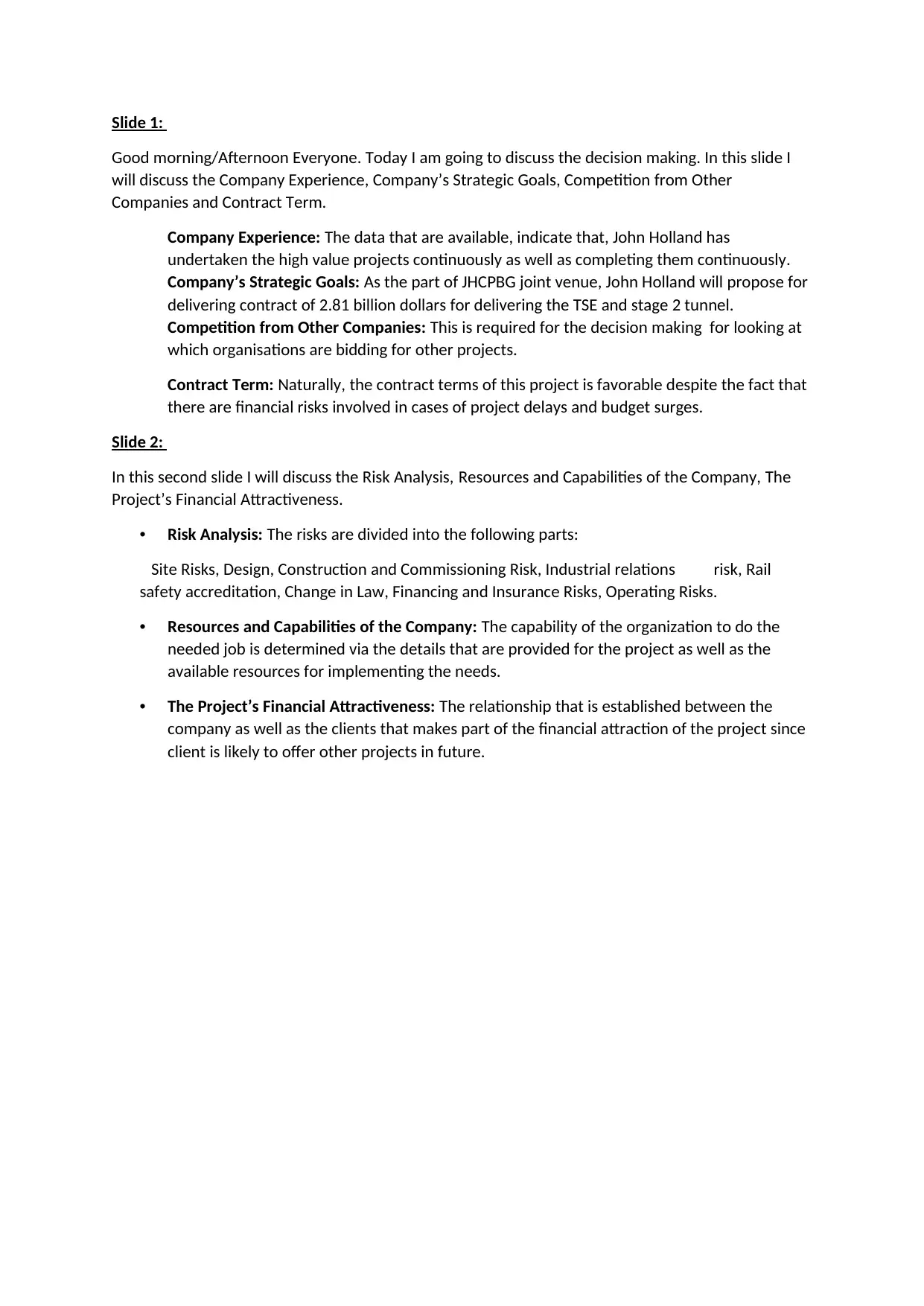Construction Company Management: Decision Making Strategies
VerifiedAdded on 2022/10/15
|1
|307
|83
Presentation
AI Summary
This presentation analyzes decision-making processes within a construction company, focusing on the evaluation of projects, risk analysis, and financial considerations. The slides cover key aspects such as the company's experience, strategic goals, and the competitive landscape. The presentation delves into risk analysis, including site risks, design and construction risks, and financial risks. It also assesses the company's resources and capabilities, alongside the project's financial attractiveness. The project's financial attractiveness is determined by client relationships, and the presentation highlights the importance of contract terms, considering potential delays and budget overruns. The assignment is related to a construction management course and is part of a group submission. The focus is on the Sydney Metro City & Southwest project and other similar projects by John Holland.






![[object Object]](/_next/static/media/star-bottom.7253800d.svg)